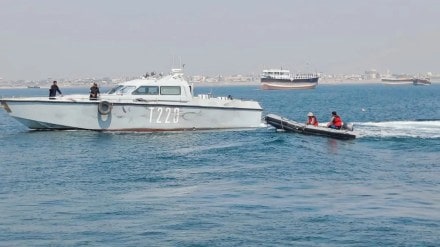The Indian Navy will conduct its largest and most comprehensive coastal defence exercise, Sea Vigil-24, on November 20 and 21, highlighting the nation’s strategic emphasis on safeguarding its extensive maritime boundaries. Now in its fourth iteration, Sea Vigil has expanded significantly since its inception in 2018, broadening its geographical reach and deepening inter-agency collaboration to enhance coastal security readiness across India’s vast coastline. This year’s edition will span the involvement of six ministries and 21 agencies, illustrating India’s growing commitment to a coordinated maritime defence infrastructure as part of its evolving Indo-Pacific strategy.
The exercise, led by the Indian Navy, will bring together national security agencies, including the Indian Coast Guard, Marine Police, and Customs, for rigorous simulations aimed at identifying vulnerabilities across the coastal frontier. The Coastal Defence and Security Readiness Evaluation (CDSRE) phase, initiated in October, has been directed by the Navy’s coastal command teams in each state and union territory, including the strategically positioned Andaman & Nicobar Islands. This year, for the first time, officials from the National Security Council Secretariat will participate, marking a step toward a more centralised and integrated coastal defence oversight.
An Expanding Web of Maritime Security
Sea Vigil-24 will also assess the readiness of critical coastal assets, including ports, oil platforms, single-point mooring systems, and cable landing points, all of which are essential to India’s economic security. As the exercise scales in scope, participation by the Indian Army and Air Force has added a layer of interoperability to the simulation, bringing more ships and aircraft to the exercise than ever before. By linking land, air, and sea capabilities, the exercise serves as a timely validation of the country’s coastal defence apparatus.
Originally designed to test India’s coastal preparedness in the aftermath of the 2008 Mumbai terror attacks, Sea Vigil has evolved into a cornerstone of India’s maritime security framework. Spanning the entire 11,098 km coastline and covering an Exclusive Economic Zone of 2.4 million square kilometres, the exercise highlights India’s commitment to keeping its shores secure amidst escalating regional complexities.
The exercise’s inclusion of fishing communities and organisations like the National Cadet Corps (NCC) reflects a grassroots approach to coastal security, aiming to foster public engagement and awareness. Maritime security experts suggest that engaging these communities is crucial, given their role as the first line of observation along India’s vast, dispersed coastlines.
Maritime Exercises and the Geopolitical Edge
India’s emphasis on exercises like Sea Vigil fits into a broader framework of maritime diplomacy, which has become increasingly central to the nation’s foreign policy in the Indo-Pacific. According to Vice Admiral MP Muralidharan (Retd), who has written on the significance of joint exercises, “maritime exercises offer nations a platform not just for defence testing, but for projecting influence and building confidence among stakeholders.” Exercises such as Sea Vigil provide India with an opportunity to bolster its regional role and highlight its capacity to maintain stability in maritime zones critical to global trade.
While Sea Vigil is a national exercise, it mirrors key aspects of India’s multilateral endeavours, including Exercise Malabar, which brings together the United States, Japan, and Australia in a security dialogue aimed at fostering cooperation in the Indo-Pacific. Much like these multilateral exercises, Sea Vigil tests inter-agency coordination and prepares India for potential joint operations with international allies, should the need arise.
In particular, Sea Vigil sets the stage for India’s Theatre Level Readiness Operational Exercise (TROPEX), a biennial naval exercise that will take place in early 2025. TROPEX is designed to test the Navy’s readiness in a high-stakes, simulated conflict scenario, and Sea Vigil serves as a preparatory measure, ironing out any structural and operational weaknesses before the larger exercise commences.
A Strategic Necessity for Coastal Resilience
India’s expansive maritime interests have compelled its military to adopt an approach to coastal security that balances both defensive and diplomatic imperatives. The seamless nature of the maritime domain, where transnational threats such as piracy, trafficking, and illegal fishing cross borders with ease, necessitates strong cooperative security measures. According to Muralidharan, naval exercises that bring together civilian and military agencies are particularly effective for this, as they enhance preparedness for a wide range of non-traditional security threats that conventional militaries alone cannot easily counter.
Moreover, Sea Vigil emphasises the Indian Navy’s Security and Growth for All in the Region (SAGAR) initiative, which advocates for cooperative engagement and maritime security in the Indo-Pacific. By including coastal populations and the fishing community in these exercises, Sea Vigil projects India’s commitment to a people-centric approach, fostering trust and collaboration that could prove crucial in real-world contingencies.
India’s Coastal Defence in a Changing Indo-Pacific
As the Indo-Pacific gains prominence as a geopolitical arena, India’s focus on comprehensive maritime security frameworks such as Sea Vigil spotlights its intention to act as a stabilising force in the region. By refining its coastal defence apparatus and reinforcing interoperability across multiple agencies, India is sending a clear message about its resolve to maintain a secure and open maritime environment.
Sea Vigil-24, therefore, stands as both a national security imperative and a statement of India’s maritime ambition. As regional dynamics evolve, this exercise reflects India’s broader strategy of leveraging cooperative security measures to project influence and ensure stability across the Indo-Pacific. The exercise is a testament to India’s readiness to not only defend its own shores but to support a rules-based maritime order that prioritises regional peace and prosperity.
